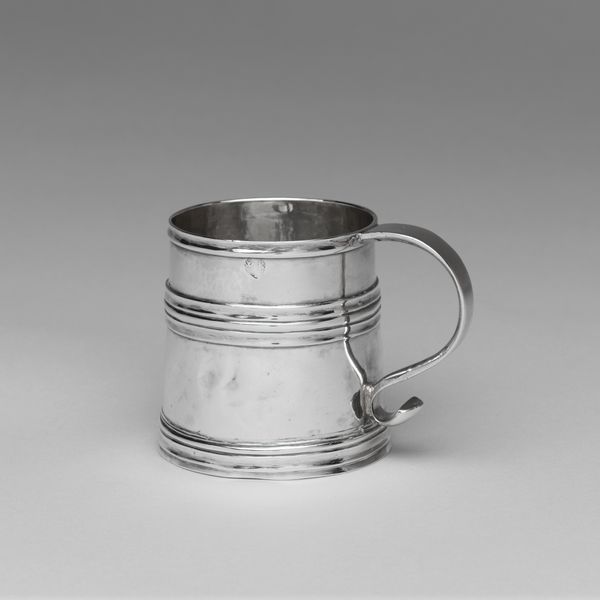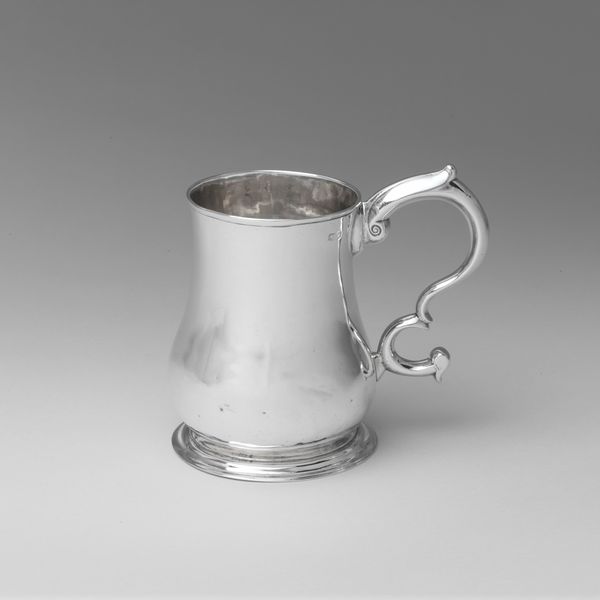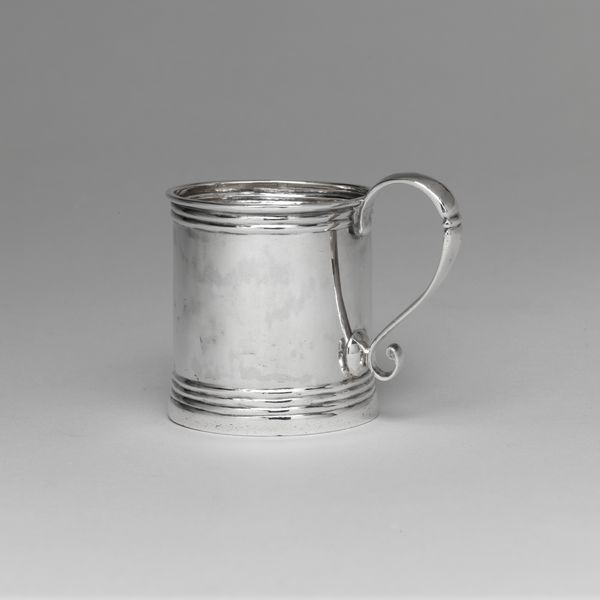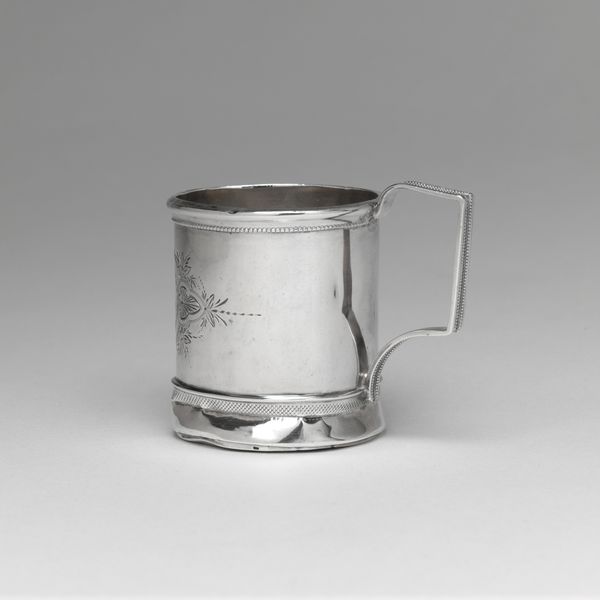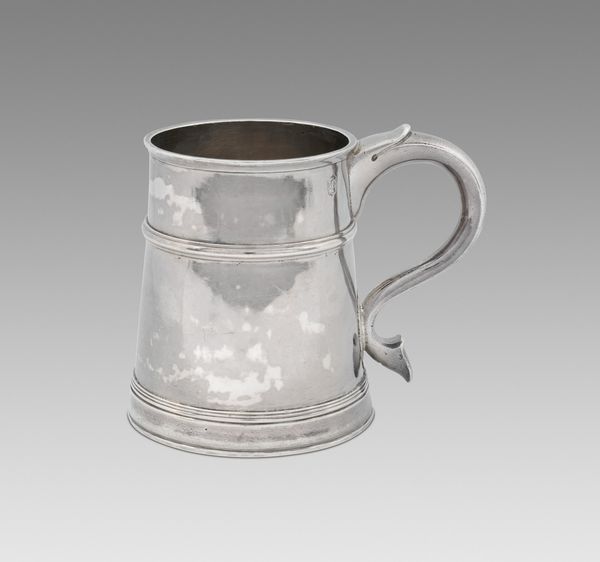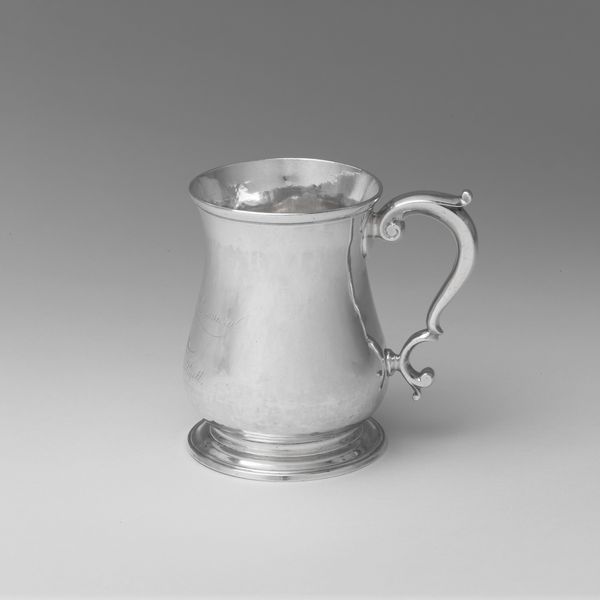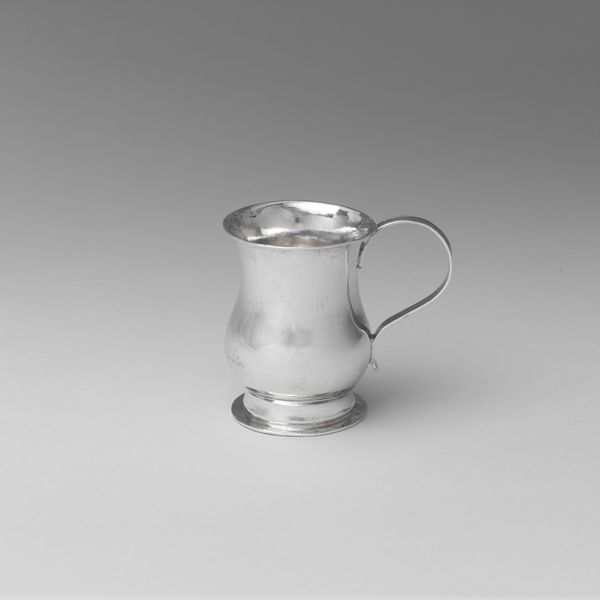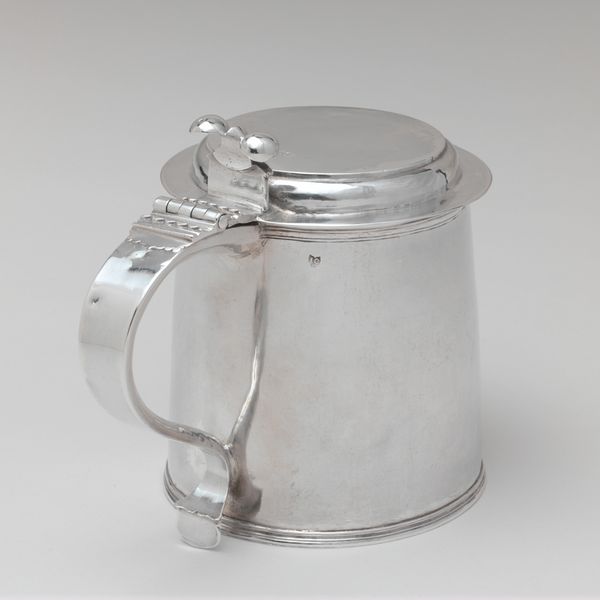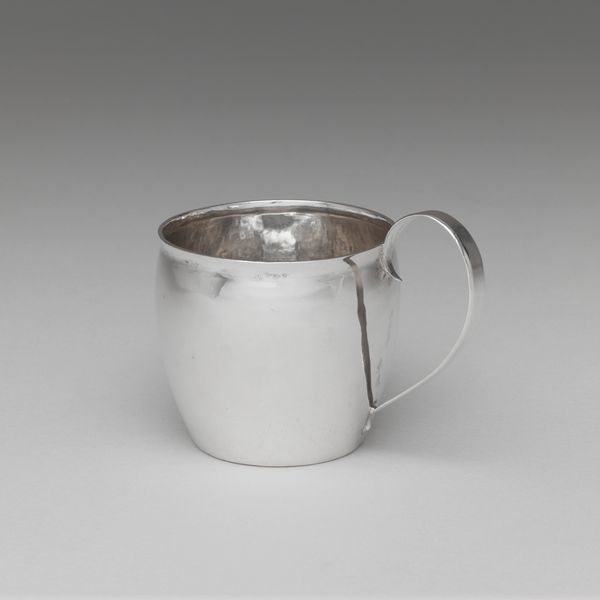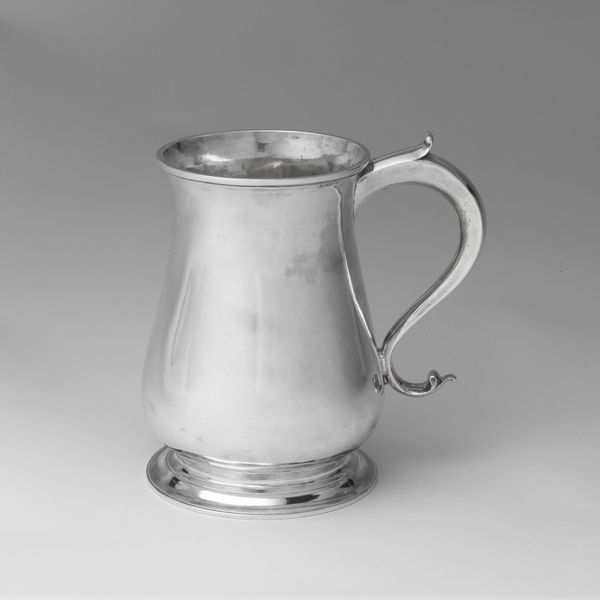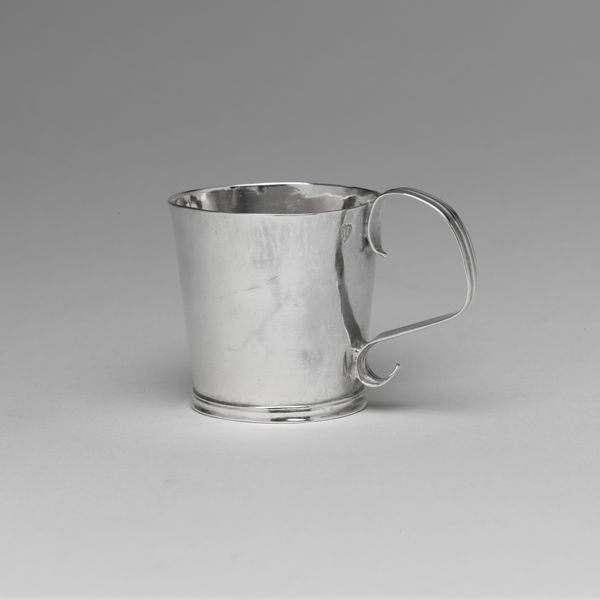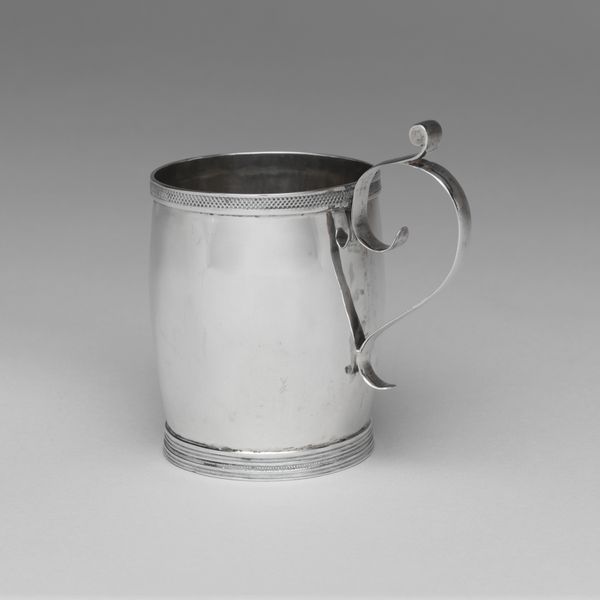
silver, metal
#
silver
#
baroque
#
metal
#
geometric
Dimensions: Overall: 3 5/8 x 5 1/4 in. (9.2 x 13.3 cm); 7 oz. 17 dwt. (244.7 g) Lip: Diam. 3 1/16 in. (7.8 cm) Base: Diam. 3 7/16 in. (8.7 cm)
Copyright: Public Domain
Editor: We're looking at a silver mug, made between 1695 and 1705 by Koenraet Ten Eyck. It's currently housed at the Metropolitan Museum of Art. It’s strikingly simple. What stories do you think this object can tell us? Curator: This "simple" mug, belonging to the Baroque period, speaks volumes about early American colonial power dynamics. Who had access to such fine silver? Who crafted it? The labor and resources invested in this mug weren't distributed equitably. Editor: I hadn't considered that. It seems like an object of status then? Curator: Exactly. Think about the societal structures of the time. Silver denoted wealth and status and reflects the privileges of the elite while masking the exploitation upon which that privilege was built. Consider the indigenous populations and enslaved people who may have been involved in the mining of the silver or the trade routes that made it accessible. Editor: So, it represents not just individual wealth, but a system of power? Curator: Precisely! Even its Baroque style indicates a desire to display affluence. We need to question who was included and excluded from such displays of prosperity. How might marginalized communities have perceived an object like this? It's about unraveling the intertwined threads of art, economics, and social justice. Editor: It gives me a new perspective on how to look at decorative arts. Curator: By viewing everyday objects through an intersectional lens, we gain critical insights into historical narratives. The aesthetic beauty becomes intertwined with the realities of human experience.
Comments
No comments
Be the first to comment and join the conversation on the ultimate creative platform.
